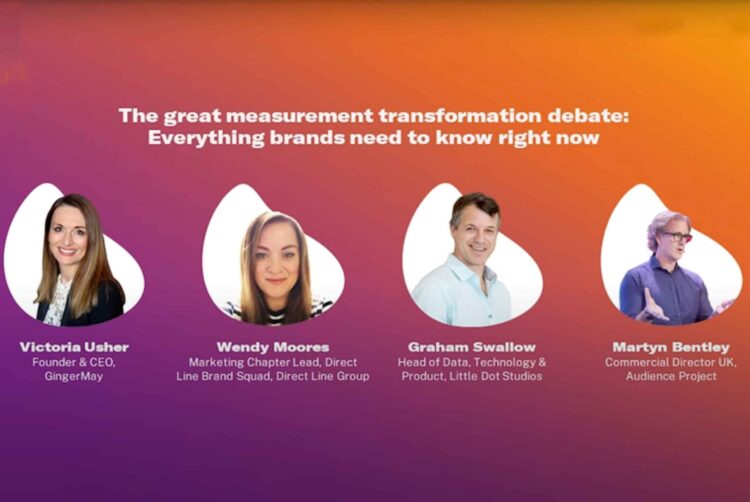Watch: Why inflation means U-turning on being ‘TV-first’

“To be blunt, nothing has happened in the last 12 months to change the measurement landscape.”
That’s the view of Graham Swallow, head of data, technology and product at Little Dot Studios, who was taking part in the ‘Great Measurement Transformation Debate’ at Mediatel’s Future of Brands event.
Lack of clarity over metrics
The development of cross-industry metrics, such as CFlight and Project Origin, “offer the possibility of greater transparency and cross-media measurement”, according to fellow panellist, Wendy Moores, head of marketing at Direct Line. However, with the data not yet available, their effectiveness is still somewhat unclear.
According to Moores, the sheer number of different measurement models can also be confusing. “Whilst they are brilliant for different channels, sometimes they tell a different story… so they make it really difficult to have that coherent narrative.”
Martyn Bentley, commercial director UK of AudienceProject, pointed to recent figures from PwC and the IAB suggesting video spend had risen by 58% in a year during the pandemic.
“Most of that is still not transparently being measured in terms of who’s being reached and at what sort of net amount of reach is happening across Facebook, YouTube, etc… It’s just not known. Also the shift in the digital TV landscape including ads on Netflix… what’s a marketer to do with that, in order to understand what’s there?”
The ability to measure attention – or attentive reach was one area of importance highlighted by the panel, but Moores warned that large reach doesn’t always mean attentive reach. “If someone is binge watching a series on Netflix, you can advertise as much as you want around that, but whether or not you are getting any effective attention from consumers is going to become a problem. You might see you are getting huge reach, but whether or not that is attentive reach is something that is really interesting.”
Crumbling concerns about loss of cookies
The panel seemed to agree that the loss of third-party cookies should be seen as a positive for any marketer wanting to get a clearer view of their campaign success. “The cookie going away… has allowed people to really learn about data quality and examine what was actually in the data sets they were using,” explained Bentley. Marketers and advertisers have learnt that segment building is probabilistic, he continued, and this is a marked change from two years ago.
Moores said the reliance on cookies to determine ad spend had taken away the “science of marketing”, and that its demise had made apparent the need to drive demand throughout the sales funnel. “Am I concerned about the loss of the cookies? Not massively,” she concluded.
Change in mindset
Swallow told the audience he didn’t think it would be a “big stretch” for agencies to use digital metrics – such as impressions and views – for TV. He also pointed to younger brands such as Gymshark, who were approaching marketing in a different way without reliance on traditional ad funding, using social media, influencer marketing, and managing micro communities to get their message across. “I don’t know how many conversations they’ve had about whether they should invest £5 million on TV, but probably not many.”
When asked how advertisers should plan and optimise their campaigns, Moores said a change of mindset was needed. She pointed out that because there was so much inflation in the TV market, the typical TV-first planning strategy needed to be “flipped on its head”. She added: “There’s a collaboration piece there, among agencies, clients, different providers, broadcasters… to work out what that measurement roadwork looks like, that’s critical.”




